Atlantis Found Exactly Where Plato Said it Was
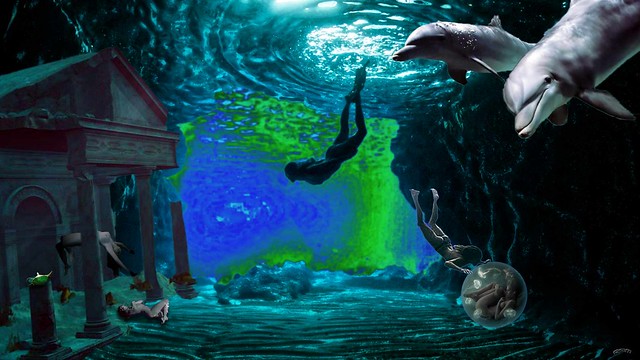
Over 15 years ago a team of explorers found anomalous structures off the western Coast of Cuba. Sonar survey showed a set of intricate stone formations 650 meters beneath the Caribbean Sea.
Strangely, no one has ever explored the sunken city after it was found.
National Geographic published an article about the sunken city when it was found and promised to perform follow-up investigations; strangely, they pulled out of the investigation.

It isn’t news anymore that there are countless sunken cities scattered across the globe. From Asia to the Americas, there are legends of great cities that were swallowed by the ocean, forgotten in time and history.
While some of these cities have been found – mostly due to better equipment researchers have in recent years - there are still many more cities waiting to be rediscovered and brought back to life.
Different ancient texts belonging to various ancient cultures speak of massive floods that swept over the earth in the distant past. Evidence of that deluge can be found today, and it is a global phenomenon that is believed to have changed life on Earth forever.
The countless submerged structures found on our planet in recent years point to a much different time on Earth when our planet’s oceans were different then they are today.
Tales and legends of sunken empires like Atlantis, Mu, and Lemuria, have captivated the imagination of past generations and continue to do so presently…
One of the most fascinating discoveries in the last decade was made just off the coast of Cuba, when a team of underwater explorers using sonar equipment picked up a staggering formation of stones located some 600 meters beneath the Caribbean ocean.

Over 15 years ago, the company Advanced Digital Communications discovered peculiar structures beneath the Caribbean Sea. Based on sonar surveys, they suggested that the structures found off the western coast of Cuba were ancient monuments of an unknown ancient civilization.
Symmetrically arranged stones, which appeared to be remnants of some ancient urban development indeed point towards a highly developed society that could have inhabited the region in the distant past.
The submerged structures seemed entirely anomalous against the barren ocean floor and seemed to display symmetrically organized structures reminiscent of urban development. All of this was found 600 meters beneath the surface.
When word of the discovery got our, a media flurry soon ensued with media reporting headlines like ‘Atlantis Discovered in Cuba’ and ‘Lost City of the Caribbean Found’, captivating the interest of numerous governments, museum and popular magazines like National Geographic who showed great interest in exploring the sunken ‘city’ and promised further research and exploration.
However, these promises were just that, empty stories that lead nowhere as no one decided to go down there and further investigate the anomalous formations off the coast of Cuba.
‘
“You just don’t make that type of discovery and pull out just like that. If sonar picked up structures underwater than the least we can do is go down there and see if there really is something down there. We could be looking at one of the most important underwater discoveries in history yet for some reason, we aren’t exploring it any further.” —author Ivan Petricevic
Over 15 years after the initial discovery was made, the story about the sunken city of Cuba disappeared into obscurity.
The question no one seems to have asked is… What happened to the alleged sunken city near the coast of Cuba? Were the mysterious structures ever fully investigated? Is it possible that without public knowledge, someone explored these enigmatic sunken structures? And why is it that such a sensational discovery fell into obscurity so fast?
Geologist Manuel Iturralde remains open-minded saying: “These are extremely peculiar structures, and they have captured our imagination,” said Iturralde, who is director of research at Cuba’s Natural History Museum. Iturralde has studied countless underwater formations over the years, but said, “If I had to explain this geologically, I would have a hard time.”
Estimating that it would have taken 50,000 years for such structures to have sunken to the depth at which they were said to be found, Iturralde added: “50,000 years ago there wasn’t the architectural capacity in any of the cultures we know of to build complex buildings.” A specialist in underwater archeology at Florida State University added “It would be cool if they were right, but it would be real advanced for anything we would see in the New World for that time frame. The structures are out of time and out-of-place.”
Here are some images of the discovery:
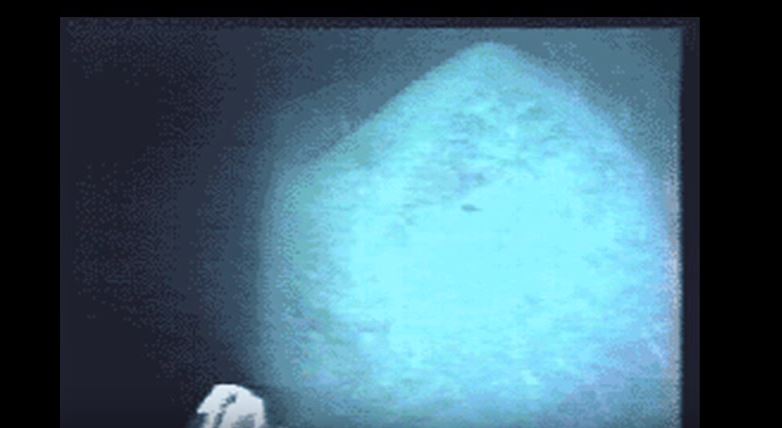

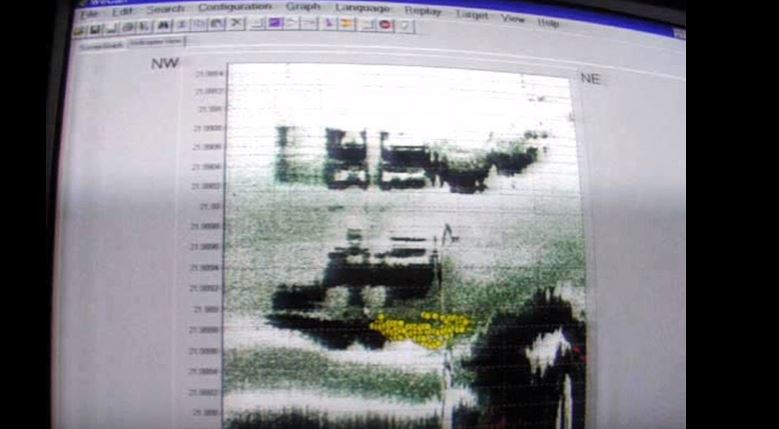
https://youtu.be/klRbcEnLPbU
Featured image credit
Mission images
Atlantis image credit
From Ancient Code @ http://www.ancient-code.com/cubas-sunken-atlantis-the-underwater-city-mainstream-scholars-ignore/
The Legend of Atlantis: Between Ancient Ruins and a Philosopher’s Tale

Deriv; Mystery beneath the sea. (Flickr/CC BY-NC 2.0)
By Brady Yoon
Atlantis is many things to many people. To some, it is a fictional island and city that a philosopher with a vivid imagination invented to illustrate a moral point, and nothing more. To others, it is merely a Bronze Age civilization that existed no more than a thousand years before the time of classical Greece whose grandeur and power were exaggerated beyond all proportions. But there are a few who maintain the belief, so ridiculed by most scholars, that Atlantis was not only everything Plato said it was—a spectacularly advanced civilization that existed before the dawn of recorded history as we know it, but more besides, namely, that it was the ancestral mother culture of all known civilizations whose legacy, though forgotten to history, has been preserved in the myths and stories of cultures all across the world and in the mysterious monuments found all around the globe.
The Birth of Nininger City
Plato, who is regarded by Atlantis researchers and skeptics alike as the sole authoritative source on this ancient city, never stated outright that Atlantis was the origin of all civilization. This bold and sweeping claim was made, over two millennia later, by the most unlikely of individuals, separated from the Mediterranean World whence the legend originated by a vast ocean of distance and time, namely by Ignatius Donnelly. An eccentric and idealistic man given to harebrained schemes, Donnelly founded a city named Nininger City which quickly became a ghost town following an economic downturn that swept the country.
Having learned the lesson that it was much more difficult to create a new community than to join an existing one, he entered politics and found considerably greater success: he served as the lieutenant governor of his adopted state of Minnesota on the eve of the Civil War, and also aligned himself with the Radical Republican faction in the war and shortly thereafter. Disillusioned by the increasing corruption of the Republican Party, he later switched parties and then retired from politics altogether, choosing to devote his still considerable energies to writing a book about yet another subject that had captured the attention of his restless mind, namely the lost civilization of Atlantis.
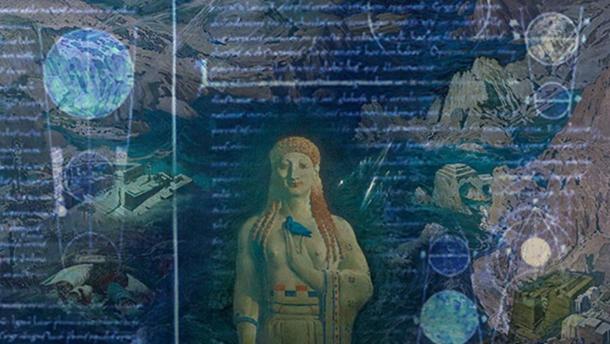
Deriv; Terror Antiquus by L.Bakst (1908) (Public Domain), Translation of Plato's Timaeus. (Public Domain).
Enjoying the privilege of unlimited access to the archives of the Library of Congress, Donnelly developed a novel thesis of breathtaking scope. He argued that the apparent similarities between cultures that were separated by vast oceans, and hence were isolated from each other throughout all of recorded history, could be explained by the influence of a worldwide civilization that had existed in remote antiquity and had spread its influence throughout the world before it met its demise. Donnelly's book, titled Atlantis: The Antediluvian World, found a receptive audience and became one of the best-selling books of its time.
The Antediluvian World and Pyramid Civilizations
In Chapter 5 of Part IV of Atlantis: The Antediluvian World, titled The Pyramid, The Cross, and The Garden of Eden, Donnelly argues for the existence of Atlantis as follows:
"How did the human mind hit upon this singular edifice--the pyramid? By what process of development did it reach it? Why should these extraordinary structures crop out on the banks of the Nile, and amid the forests and plains of America? And why, in both countries, should they stand with their sides square to the four cardinal points of the compass? ... Is it possible to suppose all these extraordinary coincidences to be the result of accident? We might just as well say that the similarities between the American and English forms of government were not the relationship or descent, but that men placed in similar circumstances had spontaneously and necessarily reached the same results."
The perceptive reader who is well-acquainted with Plato's account of Atlantis may have noticed that Donnelly's argument, strictly speaking, does not support the existence of Atlantis per se, but only the existence of some pyramid-building civilization that bequeathed its legacy to the Egyptians, the Maya and Aztec, and the other known pyramid-building civilizations across the world, as Plato never actually mentions pyramids in his dialogues concerning Atlantis!
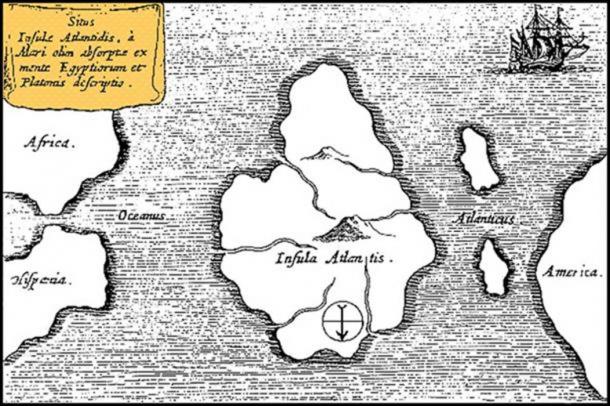
Plato's Atlantis described in Timaeus and Critias. (Public Domain)
If, on the contrary, Plato had said that Atlantis built pyramids, it would be difficult to deny that Plato's account of Atlantis was a veritable fact, for to maintain that Plato's account was fictional would mean that Plato, by pure chance, happened to invent a story about a prehistoric pyramid building civilization—precisely the civilization whose existence is pointed to by evidence only available in modern times—at a time when there was no evidence to suggest that such a civilization should have existed. Such a coincidence would have been so unlikely that it would have sufficed to demonstrate the veracity of Plato's account of Atlantis beyond reasonable doubt. This raises the question: Is there some structure, motif, or symbol that Plato does mention in his account of Atlantis that is also found in known civilizations, both in the Old World and the New, that Donnelly did not mention? In fact, there is.
Concentric Circles
The motif of concentric circles is found in a remarkably similar form across cultures all around the world, in the Old world and New, in mediums ranging from architecture, pottery, painting, and rock art. It is found in Peru, the Middle East, and on pottery shards found in the ancient city of Tartessos. Out of all of the representations of the concentric rings motif, perhaps the most interesting one is Gilgal Rephaim.
Known as Rujm el-Hiri in Arabic, the structure measures more than 500 feet (30 meters) wide and is made of thousands of basalt rocks that together weigh over 40,000 tons. According to Dr. Uri Berger, a member of the Israel Antiquities Authority, the sunrise on the summer and winter solstices is aligned with openings in the rocks. Experts are divided over whether the site was primarily a burial site or an ancient calendar, but they generally agree that the construction on the structure began as early as 3500 BC, which is older than the commonly accepted date of the building of the Giza Pyramid complex.
Another representation of the concentric circles was found in a Tartessian ceramic. This artifact was originally discovered in the 1950s, but it went unnoticed until Georgeos Diaz-Montexano, an Atlantis researcher noticed that a figure of concentric rings had been emblazoned onto it. Tartessos first appears in the historical record in the first millennium BC, but it is possible that the city was founded long before this date. The concentric circles motif also is found carved onto stone all across the world, including the North and South America, Ireland, China, and all across the Mediterranean. The widespread prevalence of this symbol suggests that there was a civilization whose influence extended across both the New and Old Worlds predating 3500 BC. Since none of the civilizations known to history had this level of influence prior to this date, the only remaining alternative is that a civilization, as yet unidentified and lost to history, must have propagated this symbol across the world. And it is precisely this symbol that is found at the very heart of Plato's Atlantis - in the construction of its capital city.
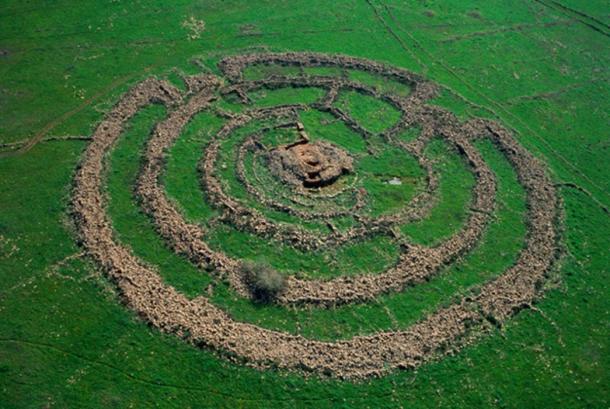
The prehistoric megalith Rujm el-Hiri / Gilgal Refaim. (Flickr/CC BY-SA 2.0)
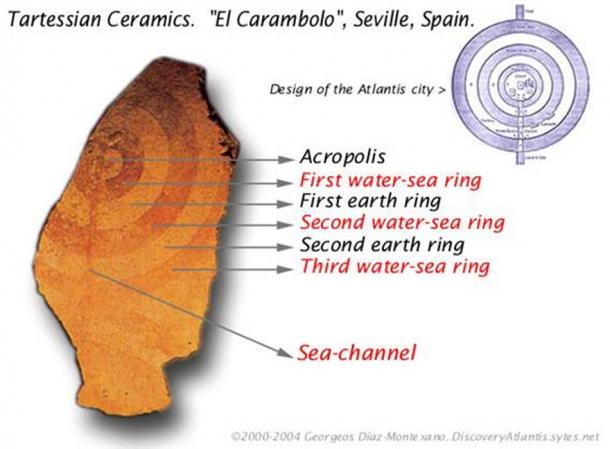
Tartessian ceramic, Tartessos
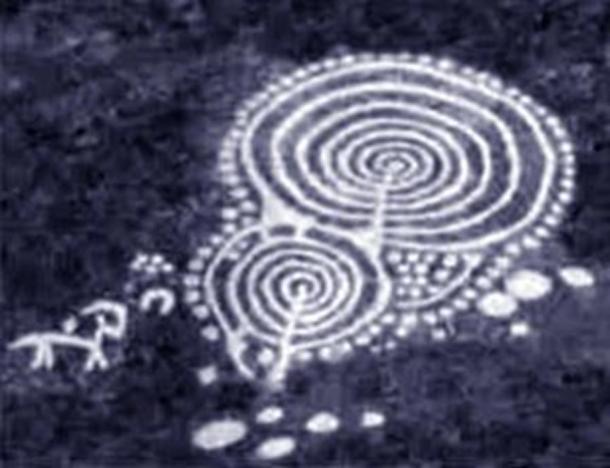
Concentric circles rock art
According to Plato, the city of Atlantis was originally carved out of a small mountain to serve as the residence for the god Poseidon and his mortal wife Cleito:
"Thereon dwelt one of the natives originally sprung from the earth, Evenor by name, with his wife Leucippe; and they had for offspring an only-begotten daughter, Cleito. And when this damsel was now come to marriageable age, her mother died and also her father; and Poseidon, being smitten with desire for her, wedded her; and to make the hill whereon she dwelt impregnable he broke it off all round about; and he made circular belts of sea and land enclosing one another alternately, some greater, some smaller, two being of land and three of sea, which he carved as it were out of the midst of the island; and these belts were at even distances on all sides, so as to be impassable for man; for at that time neither ships nor sailing were as yet in existence."
He even describes the precise dimensions of each of the rings of land and water later on:
"The greatest of the circles into which a boring was made for the sea was three stades in breadth, and the circle of land next to it was of equal breadth; and of the second pair of circles that of water was two stades in breadth and that of dry land equal again to the preceding one of water; and the circle which ran round the central island itself was of a stade's breadth. wherein stood the royal palace, was of five stades in diameter."
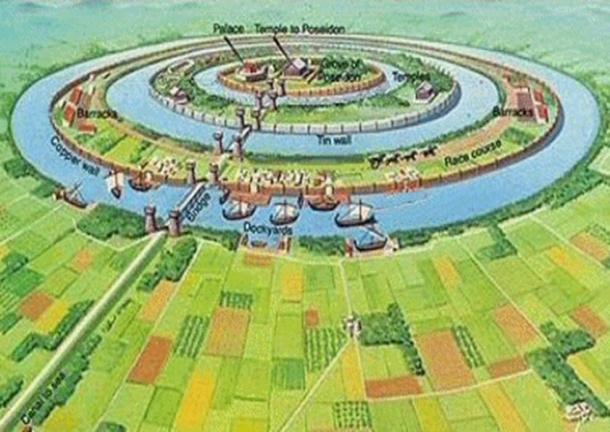
Artist’s concept of Atlantis
In the Caribbean Basin, at 17°09'51.16" N 65°03'31.45" W, there is a feature resembling Plato's Atlantis.
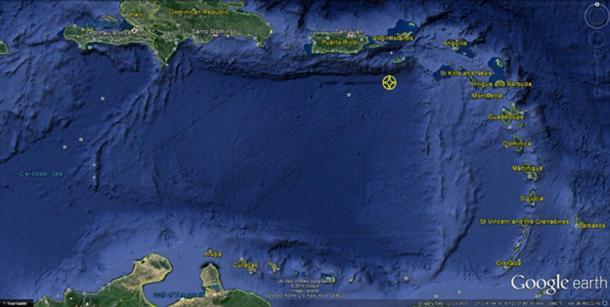
Caribbean Basin with ‘city’ location marked. Google Earth
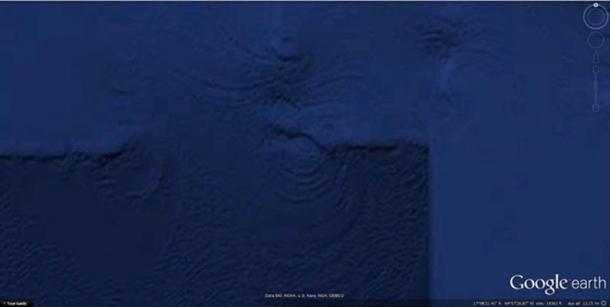
Overhead view. Google Earth
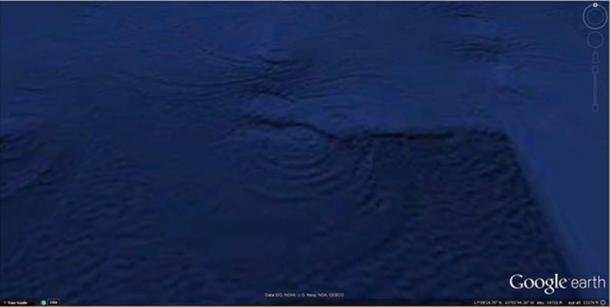
Inclined view. Image via Google Earth
Moreover, the measurements of the concentric rings precisely match those given by Plato.
Measurements
We may calculate the distance from the center of the central island to the outer edge of each of the concentric rings as follows, converting distances in units of stadia to units of miles using the conversion factor of 1 mile = 8.8 stadia. Also, we may delineate the boundaries between the each of the circular zones on the Google Earth images by observing where the colors change from light to dark, and vice versa.
First, the distance from the center of the central island to its outer edge is simply half the diameter of this central island, or 2.5 stades = 0.28 miles.
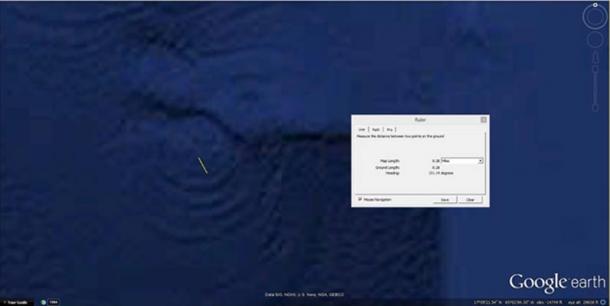
Second, the distance from the center of the central island to the outer edge of the first circle of water is the width of this first circle of water added to the previous distance (the radius of the central island), which amounts to 2.5 stades + 1 stade = 3.5 stades = 0.40 miles.
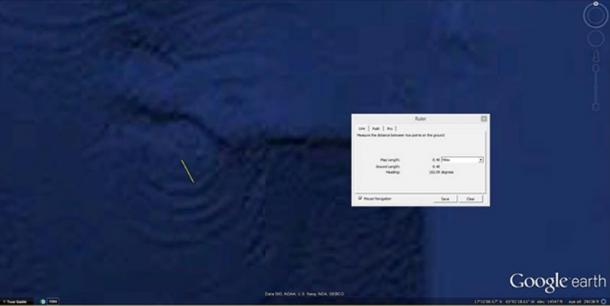
Third, the distance from the center of the central island to the outer edge of the first circle of land is the width of this first circle of land added to the previous distance, which amounts to 3.5 stades + 2 stades = 5.5 stades = 0.63 miles.
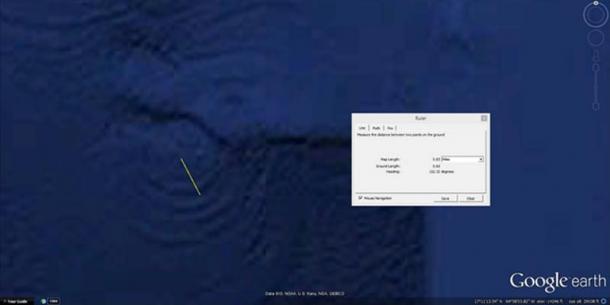
Fourth, the distance from the center of the central island to the outer edge of the second circle of water is the width of this second circle of water added to the previous distance, which amounts to 5.5 stades + 2 stades = 7.5 stades = 0.85 miles.
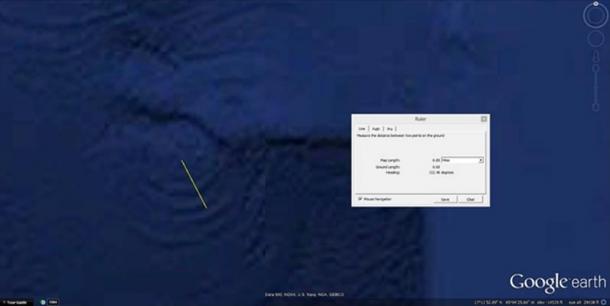
Fifth, the distance from the center of the central island to the outer edge of the outermost circle of land is the width of this circle added to the previous distance, which amounts to 7.5 stadia + 3 stadia = 10.5 stadia = 1.19 miles.
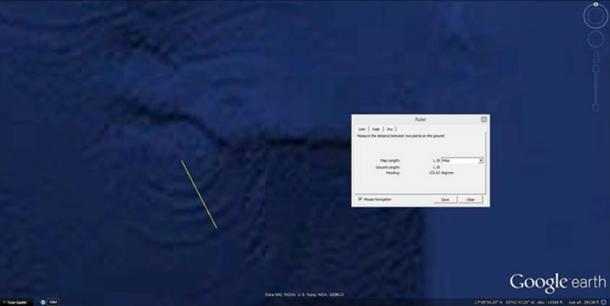
Finally, the distance from the center of the central island to the outermost circle of water is the width of this circle added to the previous distance, which amounts to 10.5 stadia + 3 stadia = 13.5 stadia = 1.53 miles.
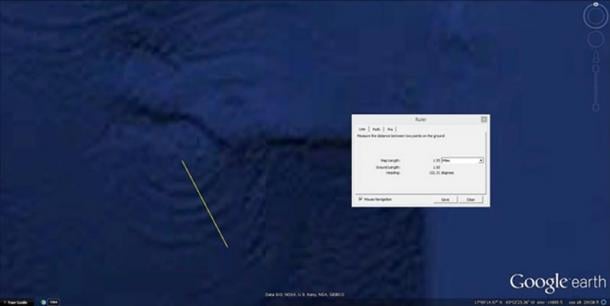
From Ancient Origins @ http://www.ancient-origins.net/opinion-guest-authors/legend-atlantis-between-ancient-ruins-and-philosopher-s-tale-006319?nopaging=1
Thanks to: http://nexusilluminati.blogspot.com






 Sat Mar 23, 2024 11:33 pm by globalturbo
Sat Mar 23, 2024 11:33 pm by globalturbo

